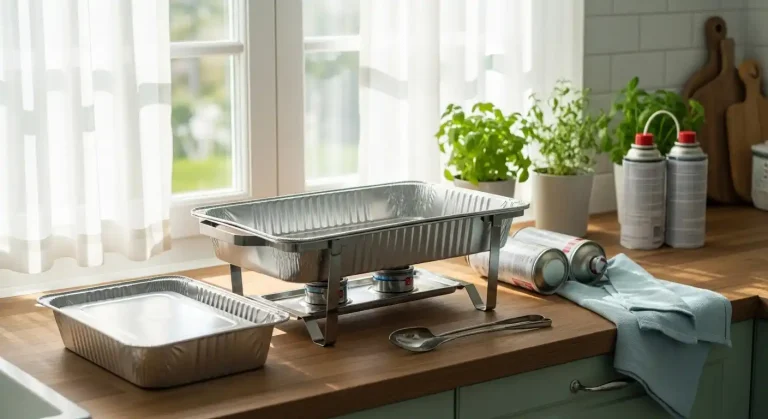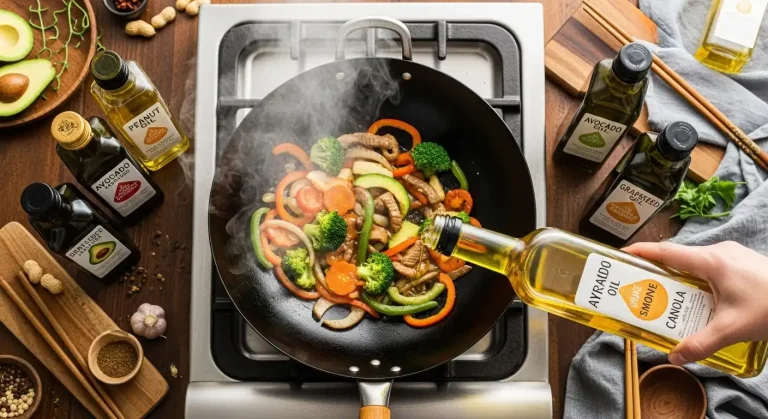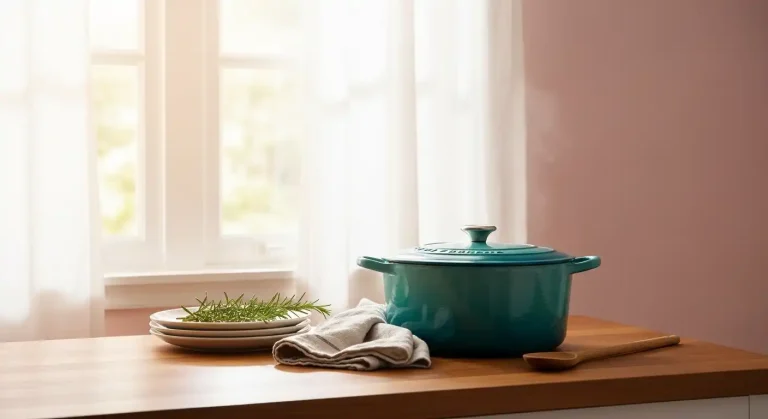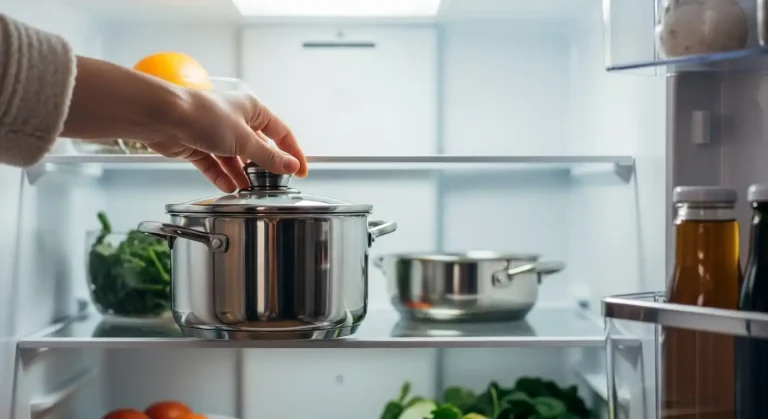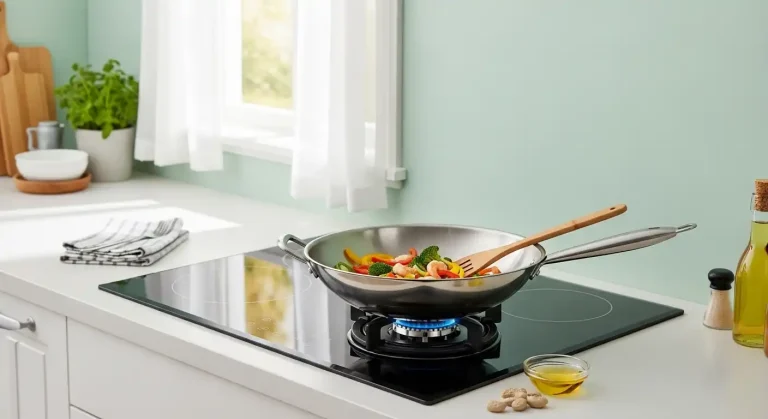Can You Use Cast Iron on a Glass Top Stove?
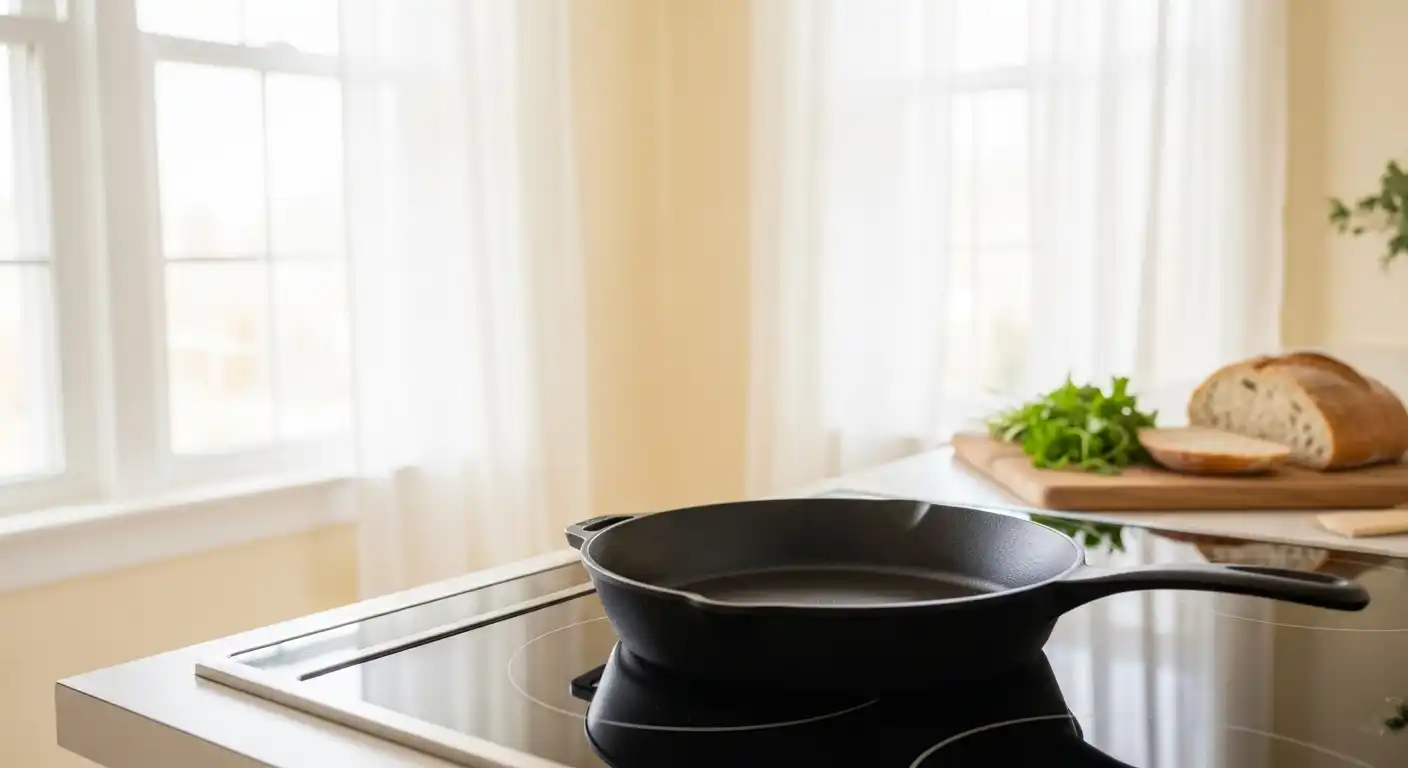
Glass top stoves, with their sleek, modern design, have become a staple in many kitchens.
Their smooth surfaces are easy to clean and add a touch of elegance to any home.
But for those who swear by the durability and cooking prowess of cast iron, a common question arises: Can you use cast iron on a glass top stove?
The short answer is yes, but there are important considerations to ensure you don’t damage your stove or cookware.
🎄 Christmas & Year-End Amazon Deals !
Don’t miss out on the best discounts and top-rated products available right now!
*As an Amazon Associate, I earn from qualifying purchases.
Let’s dive into the details to help you use your cast iron confidently and safely.
Why Cast Iron and Glass Top Stoves Spark Debate

Cast iron cookware, like the versatile Lodge cast iron wok, is beloved for its ability to retain heat and develop a natural non-stick surface over time.
However, its weight and rough texture raise concerns for glass top stove users.
These stoves, often made of ceramic or tempered glass, are prone to scratching and cracking under improper use.
The debate stems from the contrast between cast iron’s rugged nature and the delicate appearance of glass top surfaces.
Many worry that the heavy, coarse bottom of a cast iron skillet could scratch or even shatter the stovetop.
Let’s explore whether these concerns hold up and how to use cast iron effectively on this type of stove.
Is It Safe to Use Cast Iron on a Glass Top Stove?
The good news is that cast iron is generally safe for glass top stoves, provided you follow some precautions.
Manufacturers design these stoves to handle a variety of cookware, including heavy options like cast iron.
However, the key is to use your cast iron cookware thoughtfully to avoid potential issues.
One primary concern is scratching. While cast iron can have a rough exterior, especially if it’s not properly seasoned, modern glass top stoves are built to be durable.
To minimize risks, ensure your cast iron skillet has a smooth, well-seasoned bottom.
For tips on maintaining your cookware, check out how to use a pre-seasoned cast iron skillet for the first time.
Another factor is weight. Cast iron is heavy, and dropping or sliding it across the stove can cause damage.
🎄 Christmas & Year-End Amazon Deals !
Don’t miss out on the best discounts and top-rated products available right now!
*As an Amazon Associate, I earn from qualifying purchases.
Always lift your skillet carefully and place it gently on the burner to avoid cracks or scratches.
Benefits of Using Cast Iron on a Glass Top Stove

Despite the concerns, there are compelling reasons to use cast iron on a glass top stove.
Its excellent heat retention makes it ideal for dishes that require consistent, even cooking, like searing steaks or baking cornbread.
The flat bottom of most cast iron skillets ensures good contact with the glass surface, promoting efficient heat transfer.
Cast iron is also incredibly versatile. You can use it for everything from frying to baking, and it’s even oven-safe. Curious about other uses?
Learn more in can your cast iron skillet go in the oven?. This versatility makes it a favorite for home cooks looking to maximize their kitchen tools.
Additionally, cast iron’s durability means it can last a lifetime with proper care.
Unlike other cookware that may wear out, a good cast iron skillet, like those discussed in how much does a good cast iron skillet cost?, is a worthwhile investment.
Potential Risks and How to Mitigate Them
While cast iron is compatible with glass top stoves, there are risks to be aware of. Scratches are the most common issue.
Older cast iron skillets or those with rough bottoms can leave marks if dragged across the surface.
To prevent this, always lift your cookware rather than sliding it.
Cracking is another concern, though rare.
🎄 Christmas & Year-End Amazon Deals !
Don’t miss out on the best discounts and top-rated products available right now!
*As an Amazon Associate, I earn from qualifying purchases.
Glass top stoves are designed to withstand high heat and weight, but sudden impacts or extreme temperature changes can cause damage.
For example, placing a cold cast iron skillet on a hot burner can create thermal shock.
To avoid this, let your skillet warm up gradually on a low setting before cranking up the heat.
Seasoning your cast iron properly also helps. A well-seasoned skillet has a smoother surface, reducing the risk of scratches.
For guidance, see how to clean a cast iron wok for tips that apply to skillets as well.
Tips for Using Cast Iron on a Glass Top Stove

To make the most of your cast iron on a glass top stove, follow these practical tips:
- Choose the Right Size: Match your skillet to the burner size to ensure even heating and avoid hot spots. A skillet that’s too large can cause uneven cooking and strain the stove.
- Season Regularly: A well-seasoned cast iron skillet is less likely to scratch the glass surface. Learn more about maintaining your cookware in seasoning cast iron Dutch oven.
- Lift, Don’t Slide: Always lift your cast iron when moving it to prevent scratches. This simple habit can extend the life of both your cookware and stove.
- Clean the Stove Promptly: Cast iron can leave residue, especially if you’re cooking with oil. Clean your glass top stove after each use to prevent buildup. Avoid abrasive cleaners that could damage the surface.
- Control Heat Settings: Glass top stoves retain heat longer than gas or coil stoves. Start with a medium heat setting and adjust as needed to prevent overheating your cast iron.
Addressing Common Concerns
Many wonder if cast iron is too heavy for glass top stoves. While cast iron is heavier than other materials, most modern glass top stoves are built to handle the weight.
Just be cautious when placing or removing the skillet to avoid accidental drops.
Another concern is whether cast iron can cause scratches on induction glass top stoves. For those with induction cooktops, the same principles apply.
Check out will cast iron scratch an induction cooktop? for more details on safe use.
Some also ask if enameled cast iron is a better option. Enameled cast iron, like a Dutch oven, has a smoother surface that’s less likely to scratch.
However, it’s still heavy, so the same precautions apply. Learn more in can you deep fry in enameled cast iron?.
🎄 Christmas & Year-End Amazon Deals !
Don’t miss out on the best discounts and top-rated products available right now!
*As an Amazon Associate, I earn from qualifying purchases.
Alternatives to Cast Iron on Glass Top Stoves
If you’re hesitant about using cast iron, there are alternatives that work well on glass top stoves.
Stainless steel and aluminum cookware are lighter and less likely to scratch, though they may not offer the same heat retention.
For more options, see what can you use instead of a cast iron skillet?.
That said, cast iron’s unique properties make it hard to replace for certain dishes.
Its ability to maintain high heat is unmatched, making it perfect for recipes that require a good sear or crust.
Maintaining Your Cast Iron and Glass Top Stove
Proper care for both your cast iron and glass top stove ensures they stay in top condition.
For your skillet, avoid soaking it in water or using harsh detergents, as these can strip the seasoning.
Instead, clean it with warm water and a soft sponge, then dry thoroughly to prevent rust.
For your stove, use a glass top cleaner and a soft cloth to remove any residue.
If you notice smoke during cooking, which can happen with cast iron due to high heat, check out how to reduce smoke when cooking with cast iron for helpful tips.
Can You Use Cast Iron on Other Appliances?
If you’re wondering about cast iron’s compatibility with other cooking surfaces, it’s highly versatile.
For example, cast iron works beautifully on induction cooktops, as discussed in can you use a cast iron skillet on an induction cooktop?.
🎄 Christmas & Year-End Amazon Deals !
Don’t miss out on the best discounts and top-rated products available right now!
*As an Amazon Associate, I earn from qualifying purchases.
It’s also great for outdoor cooking, like on a Blackstone griddle.
However, cast iron isn’t suitable for all appliances. For instance, it should never go in a microwave.
Learn why in can you use a cast iron skillet in a microwave?.
Final Thoughts on Using Cast Iron on a Glass Top Stove
Using cast iron on a glass top stove is not only possible but can also elevate your cooking.
With proper care and technique, you can enjoy the benefits of cast iron without worrying about damaging your stove.
By seasoning your cookware, lifting it carefully, and matching it to the right burner size, you’ll ensure a seamless cooking experience.
Whether you’re searing a steak, frying chicken, or baking a skillet cookie, cast iron’s versatility makes it a kitchen essential.
Just remember to handle it with care and maintain both your cookware and stove for long-lasting performance.
For more cast iron tips, explore how to store food in cast iron cookware to keep your skillet in top shape.

